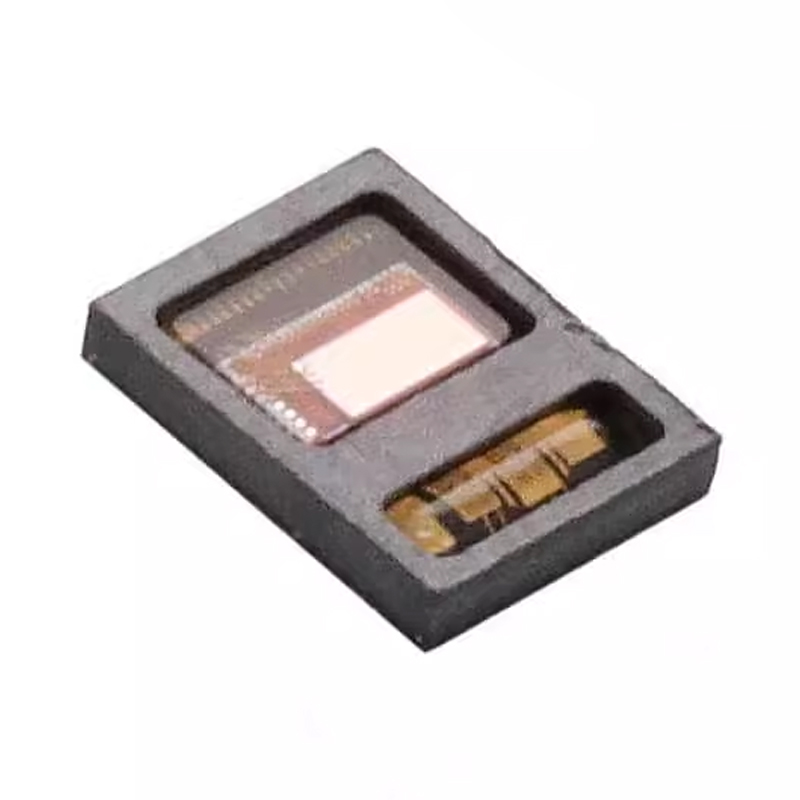Shenzhen Gaisi Electronics Technology Co.,Ltd
Aaron_liu
86-18664915172
86-0755-21046771
86-0755-21046771
aaron@gselectro.com
深圳市福田区振华路122号海外装饰大厦4B10

Product Details: ADPD188BI-ACEZR7 Integrated Optical Module for Vital Signs Monitoring
Product Details: ADPD188BI-ACEZR7 Integrated Optical Module for Vital Signs Monitoring
Introduction:
The ADPD188BI-ACEZR7 is a highly advanced integrated optical module designed to provide accurate and reliable vital signs monitoring in a variety of applications. This cutting-edge device offers exceptional performance, making it an ideal choice for projects that require precise and non-invasive health monitoring.
Specifications:
Optical Wavelengths: 470 nm and 530 nm
Photodiode Channels: 4
ADC Resolution: 20 bits
Sampling Rate: Up to 32 kSPS (kilo-samples per second)
Supply Voltage: 1.7V to 3.6V
Interface: I2C-Compatible
Package: 9-ball WLCSP
Advantages:
High Precision: The ADPD188BI-ACEZR7 offers outstanding accuracy in vital signs monitoring, ensuring reliable health data with minimal errors.
Multi-Wavelength Sensing: Equipped with two optical wavelengths (470 nm and 530 nm) for versatile and accurate measurements.
High-Resolution ADC: A 20-bit analog-to-digital converter (ADC) allows for precise and detailed data acquisition.
Fast Sampling Rate: With a sampling rate of up to 32 kSPS, it provides real-time health data for quick and accurate monitoring.
Low Power Consumption: The device is energy-efficient, conserving power and extending battery life in portable and wearable applications.
Key Features:
Multi-Wavelength Sensing: The ADPD188BI-ACEZR7 utilizes two optical wavelengths to measure various vital signs, including heart rate, heart rate variability (HRV), and oxygen saturation (SpO2).
High-Resolution ADC: A 20-bit ADC provides precise and detailed measurements, making it suitable for applications demanding high data accuracy.
Fast Sampling Rate: With a rapid sampling rate of up to 32 kSPS, it delivers real-time data, ensuring timely monitoring and analysis.
Low Power Consumption: Designed with low power requirements, it is well-suited for battery-operated devices and wearable health technology.
Digital Interface: The I2C-compatible interface simplifies communication with microcontrollers and digital systems, allowing for easy integration and control.
Key Applications:
The ADPD188BI-ACEZR7 integrated optical module for vital signs monitoring can be effectively employed in various industries and applications, including:
Wearable Health Technology: Integrates into wearable devices such as smartwatches, fitness trackers, and medical wearables to monitor vital signs and provide real-time health data to users.
Remote Health Monitoring: Supports remote patient monitoring systems, allowing healthcare providers to monitor patients' health status without direct physical contact.
Health and Wellness Applications: Utilized in health and wellness apps and devices to help individuals track their vital signs for fitness and well-being.
Medical Devices: Integrated into medical instruments and equipment for non-invasive patient monitoring, such as pulse oximeters and stress management devices.
Sports and Fitness: Used in sports and fitness equipment to monitor the heart rate, oxygen saturation, and HRV of athletes and fitness enthusiasts during training and performance assessment.
Clinical Healthcare: Employed in clinical settings for patient monitoring and assessment, contributing to improved healthcare and treatment outcomes.
Conclusion:
The ADPD188BI-ACEZR7 integrated optical module for vital signs monitoring is a cutting-edge solution for applications that require precise and non-invasive health monitoring. With its multi-wavelength sensing, high-resolution ADC, fast sampling rate, and low power consumption, it offers superior performance and adaptability. Whether you need to monitor vital signs in wearable devices, remote health monitoring systems, or clinical healthcare applications, the ADPD188BI-ACEZR7 is a dependable choice for your health monitoring needs. Its digital interface simplifies integration into a variety of digital systems, making it a valuable tool for achieving accurate and real-time health data for improved well-being and healthcare outcomes.